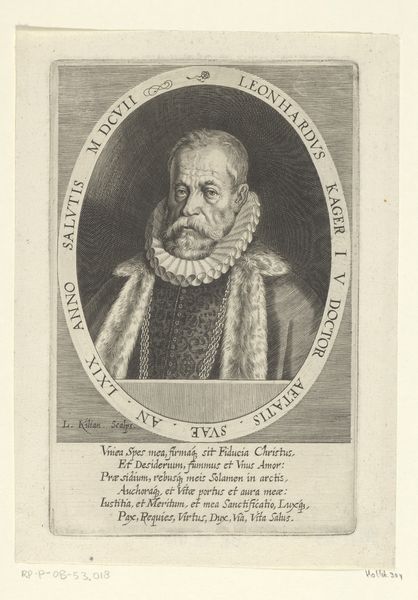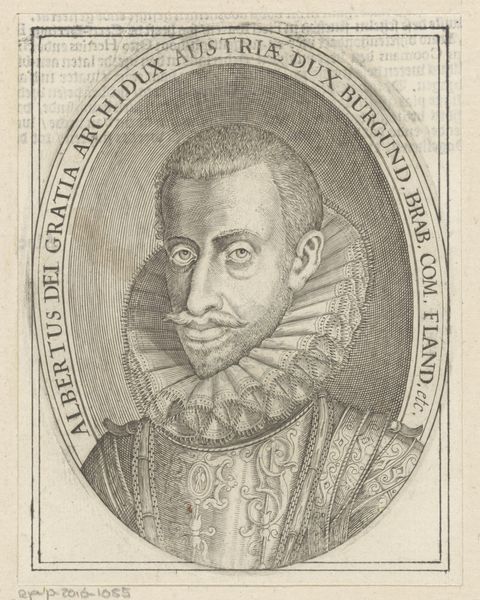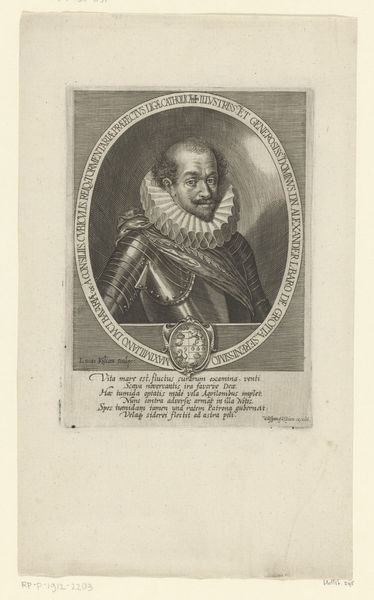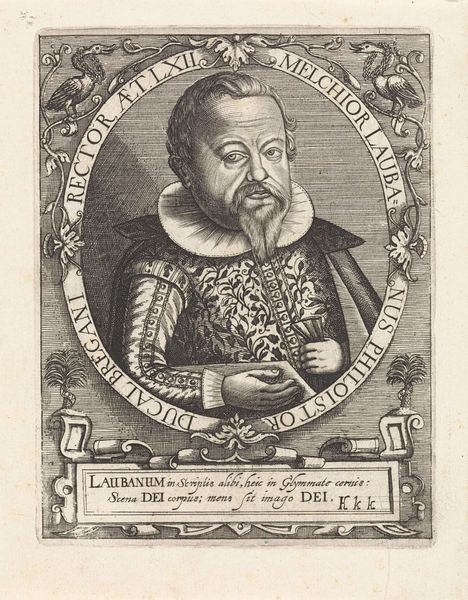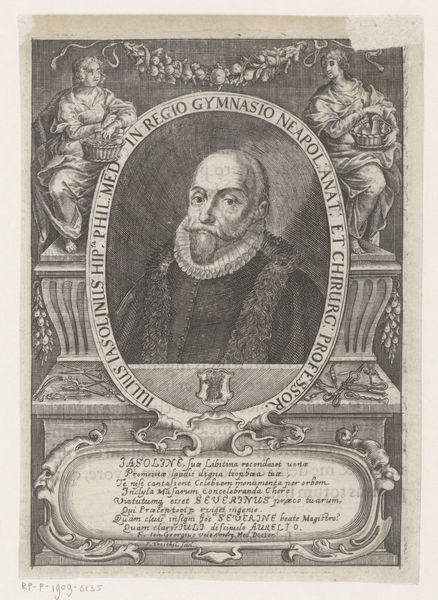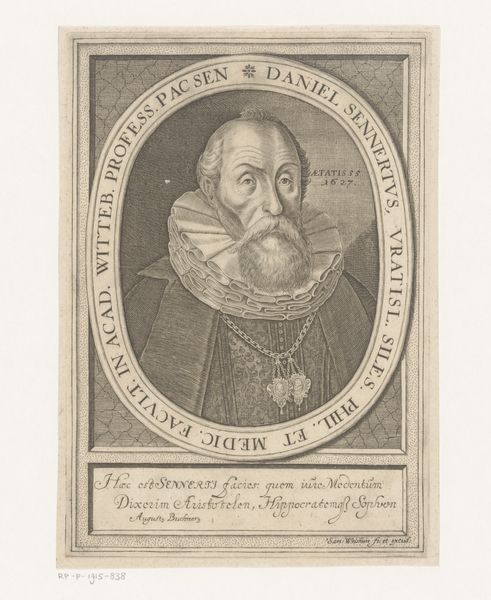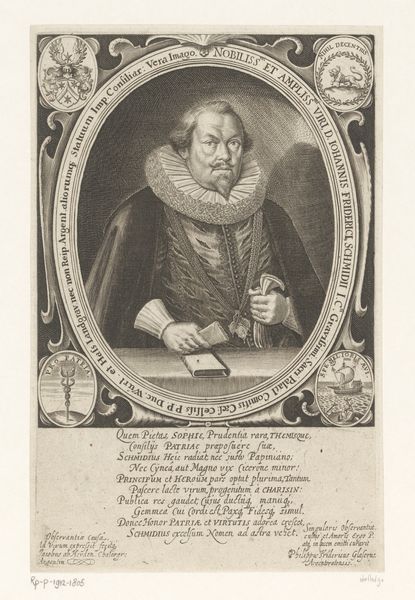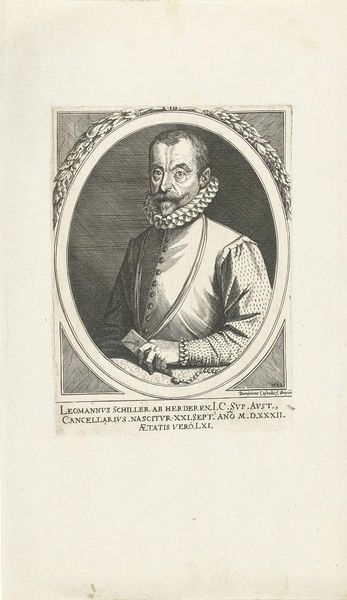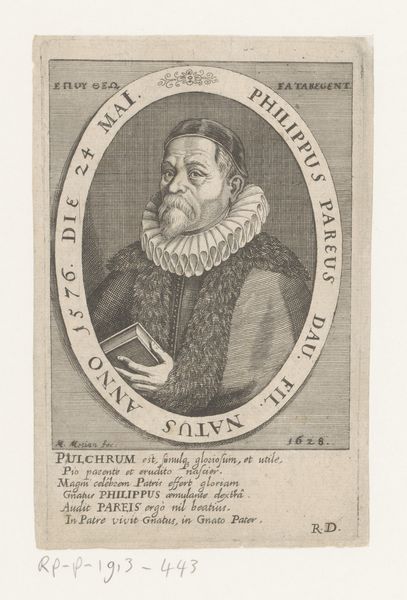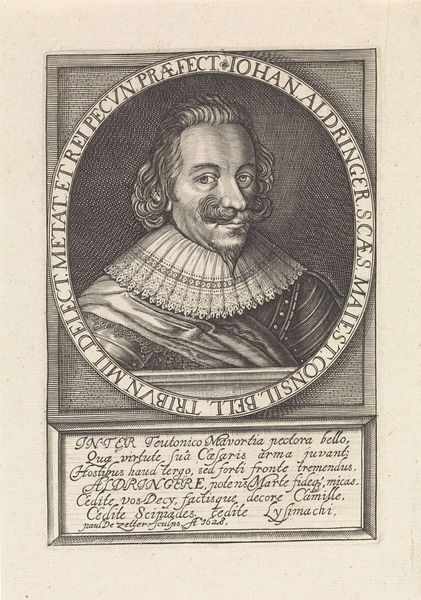
print, metal, engraving
#
portrait
#
baroque
# print
#
metal
#
northern-renaissance
#
engraving
Dimensions: height 180 mm, width 127 mm
Copyright: Rijks Museum: Open Domain
Dominicus Custos made this portrait of Friedrich Wilhelm of Saxe-Altenburg, sometime between 1590 and 1615, using engraving. The image presents Friedrich Wilhelm as a man of status and authority. The Latin inscriptions and heraldic elements speak to the social codes of the European elites at the time, particularly within the Holy Roman Empire. Dominicus Custos was part of a network of artists and publishers who produced imagery for the imperial court, so we can assume that the image was destined for circulation within such circles. The portrait reflects not just the individual but the ideals and aspirations of a ruling class in a period of religious and political upheaval. For instance, the subject's elaborate ruff and fur-lined coat, signal wealth and power but also a certain adherence to conservative social norms. To fully understand the portrait, one might delve into the history of the House of Wettin, the political dynamics of Saxony, and the role of portraiture in shaping princely identity.
Comments
No comments
Be the first to comment and join the conversation on the ultimate creative platform.



